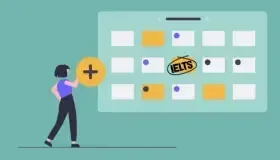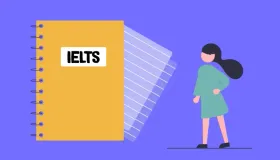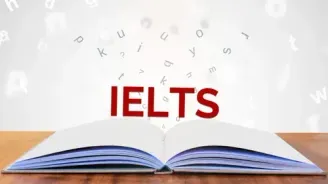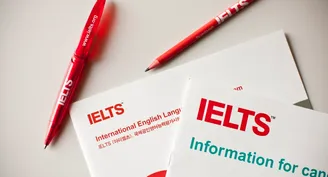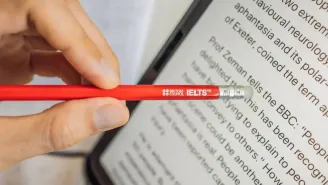Henry Moore Reading Answers Passage
Henry Moore Reading Answers Passage
In the 20th-century art world, Henry Moore was the leading British sculptor.
Paragraph 1: Henry Moore was born in the small town of Castleford near Leeds in the North of England. Raymond Moore and Mary Baker are his parents, he was the seventh child in his family. He did schooling at Castleford grammar school from 1909 to 1915. The place he got interested in art which was encouraged by the teacher named Alice Gostick. After the academics got over, Moore wanted to become a sculptor but instead as per his father’s wish he got trained as a school teacher. In 1917, he had to leave his training as he was sent to France for the First World War.
Paragraph 2: After the war, Moore studied for two years at the Leeds School of Art. The first year was gone by learning and spending time on drawing. He wanted to study sculpture but there was no teacher appointed for that till his second year. In the final year, he got merit in the sculpture exam and was awarded with a scholarship to study in Royal College of Arts in London.
Paragraph 3: In September 1921, he started his advanced studies of sculpture at London. At Royal College he was instructed to visit the London museums and he visited many of them and particularly the British museums, which contain a huge-range of ancient sculpture collections. The power and the beauty of the ancient Egyptian and African sculpture was discovered by him during the visits. There his interest over the primitive forms of art got increased and he got away from European sculptural traditions.
Paragraph 4: After graduation, Moore spent the first six months travelling in France in 1925. His visit to the Trocadero Museum in Paris made him get impressed by the cast of Mayan sculpture of rain spirit. The sculpture was a male reclining figure with knees lifted up together and his head in the right angle to its body. Moore got more interested by seeing this stone sculpture and he thought that no other stone sculpture had this much power and originality. That made him sculpt in stone in various subjects that includes reclining women, groups of mother and childs, and masks.
Paragraph 5: The exceptional talent of Moore got recognition which made him work as a sculpture instructor at Royal College in 1926. In 1933, he became a member of unit one which has groups of young artists. The group’s motto is to convince the English public of the emerging international movement of modern art and architecture.
Paragraph 6: In this period, Moore started experimenting with abstract shapes moving away from human figures. At the Leicester galleries in London he held an exhibition. His work got a huge welcome from the fellow sculptors but in the press it got negative reviews this turned Moore into a notorious figure. And from the Royal College he resigned and the following year he started a sculpture department at the Chelsea School of Art in London.
Paragraph 7: Throughout the 1930, Moore did not work to convince the British public. He got interested in the paintings of the Spanish artist Pablo Picasso which inspired him to distort the human body in a radical way. Sometimes he abandons the human figure altogether. In this period, the sketchbooks of Moore reveal the ideas of abstract sculptures that have some resemblance to humans.
Paragraph 8: During the second world war in 1940, Moore stopped teaching at Chelsea school and went to a farmhouse 20 miles north of London. Due to the shortage of materials he started drawing. He started with small sketches of Londoners and later turned that into the large colour drawings in his studio. In 1942, he returned to Castleford to sketch a series of miners working there.
Paragraph 9: In 1944, a town near London named Harlow offered Moore a commission to sculpt a family. The output shows a great change in Moore’s style which is away from the experimentation of natural and human subjects done in 1930. He did many studies in clay for sculpture and they were cast in bronze and issued in 7 to 9 editions. By doing this Moore’s work is available to collectors across the world. The raise in income made him focus on the great projects and worked on the scale based on the demand he felt for his sculptures.
Paragraph 10: Critics who thought that Moore had become less revolutionary were proven wrong. In 1950, the series of standing figures in bronze with the harsh and angular pierced forms and direct impression of menace did that. In 1950’s, Moore varied his subject matter with works such as warrior with shield and falling warrior. It is the rare example of Moore’s use of male figures which happened from the visit to Greece in 1951 where he studied the ancient work of art.
Paragraph 11: In the final years, the Henry Moore Foundation was created to promote his art and to display his work. He was the first modern English sculptor who gained international recognition and is still regarded as one of the most important sculptors of the 20th century.
Henry Moore Reading Answers with Sample Questions
Discover exciting and informative IELTS reading answers about Henry Moore Reading Answers with Sample Questions.
Check Out 15 IELTS Reading Practice Test Questions with Answers
Below are some top free IELTS reading Practice test online questions with detailed answers to enhance your IELTS preparation online. We have provided sample passages for each test type for your reference.
- The Vikings Wayfaring Ways Reading Answers
- Natural Pesticide In India Reading Answers
- Bakelite Reading Answers
- William Henry Perkin Reading Answers
- The Impact Of Wilderness Tourism Reading Answers
- Bondi Beach Reading Answers
- Transition Care For The Elderly Reading Answers
- Doctoring Sales Reading Answers
- The Secret Of Staying Young Reading Answers
- Roman Tunnels Reading Answers
- Flying Tortoises Reading Answers
- Bath International Music Festival Reading Answers
- A Remarkable Beetle Reading Answers
- Sheet Glass Manufacture The Float Process Reading Answers
- Space Travel And Health Reading Answers
- Pulling Strings To Build Pyramids Reading Answers
- Raising The Mary Rose Reading Answers
